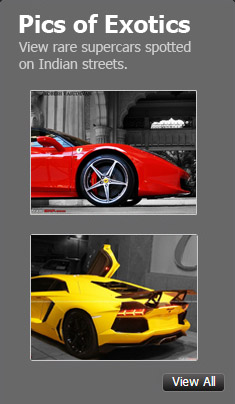News
4 years and 20,000 km with our Kia Seltos: Would we buy it again today
I think Seltos redefined what affordable style and sophistication mean. It was and still is one of the most stylish cars available in the market.
BHPian scorpi0N recently shared this with other enthusiasts:

In 2019-2020, we were in the market to buy a new car, and were using the Ford Figo first generation for about a decade at that time. The budget that we had in mind was about ₹ 15L. Had it been a few years earlier, the choice would have been, by default, Honda City – a car which was a long-term favourite of my father and, for a very long time, had a strong aspirational value. In fact, just one/two years ago, a colleague of mine had purchased a Honda City AT for roughly ₹13L OTR. I remember, he had shortlisted City and Creta after long research, and chose the City eventually.
But, Kia’s blockbuster entry in India had changed things for us.
I. From Sedan to SUV/ Crossover
There was also a noticeable shift from sedans/ hatchbacks towards SUVs/ crossovers in India. Strange as it may seem this was not only a trend in Indian market, but globally as well.
For instance, in recent years more than half of new cars sold in the US are SUVs and pickup trucks. Americans generally have larger roads, ample parking places and houses built with parking in mind, so managing SUVs is not a problem for them. But the preference for SUVs has a historical dimension. In the 1970s, Arab oil-producing countries cut oil shipments to the U.S. in retaliation for its support of Israel leading to fuel price hikes, long lines at gas stations, and a recession. In response, the U.S. government introduced fuel-economy standards for cars. To comply with these, carmakers had to develop more complex engines, which would require heavy investment for engineering/ R&D, make the car costly and, most likely, reduce profit margins. However, the government exempted "light trucks" from these rules, a category that included large SUVs. This allowed automakers to continue producing less fuel-efficient, yet more profitable SUVs, which they marketed as symbols of American freedom and adventure.
The Economist laments that Europe is also bidding farewell to small cars. Smaller, but stylish and exciting cars, such as the Fiat 500, Volkswagen Beetle, Austin Mini, Citroën 2CV were pop-culture icons in Europe once. Unlike the U.S., which reshaped cities for large vehicles, Europe had retained its narrow, medieval streets. High fuel taxes encouraged fuel-efficient, smaller engines. While Americans often drove long distances in larger cars, Europeans relied more on public transport and bikes. After WWII, Europe embraced car ownership for freedom, even if it meant driving smaller vehicles. However, since the start of the century, smaller European cars are being increasingly replaced with SUVs. In Europe, larger cars are a result of increasing wealth. The Economist quotes Pedro Pacheco from Gartner research firm, who explains, "People buy as many cars as they can afford," and "as long as it is within their budget, bigger is always better". The same seems to be happening in India. As purchasing power has increased, we have started demanding larger cars.
II. Our Decision
Due to these shifts, the sub-compact-SUV and compact-SUV segments were starting to get competitive. Whoever was in the market at that time, couldn’t have missed Kia’s entry in India with the Seltos. The Seltos was globally first showcased at Auto Expo Delhi 2018 as SP Concept, where it was positively received.
Next year, the Seltos was officially announced. It received rave reviews and was an instant hit. Eventually, it was voted as team-BHP’s COTY 2019 and singly-handedly gave Kia a solid foothold in the Indian market, which Kia followed excellently with Carnival, Sonet and Carens; thereby, establishing itself as a formidable player here.
After rejecting the City for not receiving any major updates over the last many years, we shortlisted Seltos, Creta and Ecosport. An Ecosport would have been a worthy upgrade from Figo, but it also had not received any major updates and there were rumours (at that time) of a facelift in a year or two. But, we didn't want to wait that long, and hence moved ahead.
Between Creta and Seltos, most of us liked Seltos. It was also more VFM between the two at that time.
To be honest, I didn’t like the marketing of Seltos at all. All those badass ads, with Tiger Shroff and an animated character, didn’t click with me! Marketing the HT line for family, and more costly GT line for youth was also unfathomable. But, Kia was aggressive and agile in their overall approach. And they had a really... a really solid product which came in the market at the right time.
We wanted petrol engine, and were okay with a manual transmission. I had really liked the black colour, but it was available only with HTX and HTX+. Going for HTX would have meant overshooting the budget, and the additional features in HTX (17" alloys over 16" steel, 2 inches bigger infotainment system, leatherette interior, air purifier etc.) didn't justify more than ₹3 lakh premium over HTK. Notably, the sunroof was only available in the HTX+ at that time. The variant which was initially shortlisted, as the most VFM, was HTK. Eventually, we selected HTK+, which had alloys instead of steel wheels. Regarding the colour, the one which was selected by everyone was Red... Intense Red!

III. Five Things I Really Like About Seltos
Now, the car has completed about four years and has been driven more than 20K KMs. Five positive observations based on experience till now.
- Stylish Design
I have to start by saying that the Kia Seltos is one of the most stylish cars I’ve come across. The design is impeccable, and it truly is an attention seeker...from any angle. From the bold front grille to the sleek lines and striking LED headlights, (the 2019) Seltos looks incredibly modern and sophisticated (even today).






- Comfortable City Cruiser
The overall car size (between hatchbacks and D-segment SUVs) is just fine for navigating everyday urban environments. The spacious interior can comfortably seat five mid-sized adults, and is complemented with a large boot space of 433L. The ground clearance (of 190 mm) is really helpful, and is a major consideration these days while buying a car. On decent roads, the ride quality is very comfortable.
- Engine Refinement and Efficiency
The 1.5L petrol engine is very refined. The cabin remains reasonably quiet, even at higher speeds. It offers excellent fuel efficiency (about 17 KMPL).
- Premium Cabin

The cabin is well-appointed, with good-quality materials and a thoughtful design. The dashboard is sleek, and the overall finishing make it look very premium. The rear windows have sun-blinds which come very handy.
- Packed with Features and Essentials
Last but certainly not least, the features of the Seltos are impressive. The ones in HTK+ include ABS with EBD, front and rear disk brakes, electric ORVMs with turn signals, auto-folding ORVMs, push button start, 8” infotainment etc. The top variant boasted of electric sunroof, ventilated front seats, 10.25" infotainment, front parking sensor, BOSE speakers etc.
IV. Five Things I Don’t Like About Seltos
- Build Quality/ Safety
The issue with the car is of course safety. There have been two incidents in the city and the damage has been such that both have led to panel replacements. The first incident, where another vehicle hit Seltos from behind, dented the tailgate so much that it had to be replaced (costed about ₹35k with almost entire amount borne through insurance claim). In another incident, an autorickshaw (with some speed) hit the car on the left. And this is how it looked after it.

The front left fender panel was replaced and front left door panel repainted. This costed about ₹17k, including about ₹4k out of pocket. Now, I know that the car has scored just 3-stars in Global NCAP. But, I feel that Kia should have worked more on enhancing the structural integrity of the car. I read over the internet and it seems that the Indian version (and other emerging market versions) of the Seltos are 100-300 KGs lighter than the Seltos in the US, South Korea and other advanced economies. Now to some extent, it could be due to the engine difference, but those versions also seem to have better reinforcements and fare better in safety. I think Kia has kept the weight lighter to enhance fuel economy, for their EM versions.
The others are more of minor complaints.
- The suspension is tuned such that poor roads are felt badly inside the cabin.
- The under-thigh support in the rear seat could have been better.

- The paint quality is above-average, and could have been more premium.
- Finally, I don’t like the pace at which the prices have increased. The ex-showroom price of HTK+ was ₹11.5L at the time we purchased. Today, it is ₹14.14L, an increase of ₹2.75L in 3 years. This has been the case, not only with Kia, but for other automakers as well.
V. Service and Maintenance
The service experience has been good. The Kia team has always been diligent in following up for timely service. They were very helpful during insurance claims and subsequent repair works. The first paid service (after three complementary) costed about ₹ 8k.
VI. Legacy
Seltos proved to be a very important car for the Indian market. I think Seltos redefined what affordable style and sophistication mean. It was and remains one of the most stylish cars today. It introduced advanced tech and features in the segment, some of which were available only in cars of much higher segments, setting new benchmarks. By introducing a large variant spread, it lets customers select the most VFM one, suits their requirements.
However, when I see ads like this, I think we have started giving way too much importance to gimmicks, these days...

The Autocar podcast deliberates on this pertinent issue i.e, how much tech is too much tech!
VII. Conclusion
What about us? Knowing what we know now about safety, would we, given a chance, buy Seltos again? Out of all the 5-seater cars launched since the arrival of Seltos, the Volkswagen Virtus has particularly caught my attention. If I was in the market today, it might have been Seltos vs. Virtus for me.
But, now we have gotten emotionally attached to the car. There are so many wonderful memories which have now become associated with it. We now know Seltos’ strengths and weaknesses and how much to expect and how to use it judiciously. The Seltos is now a part of our family!
Few closing shots!


Check out BHPian comments for more insights and information.


























